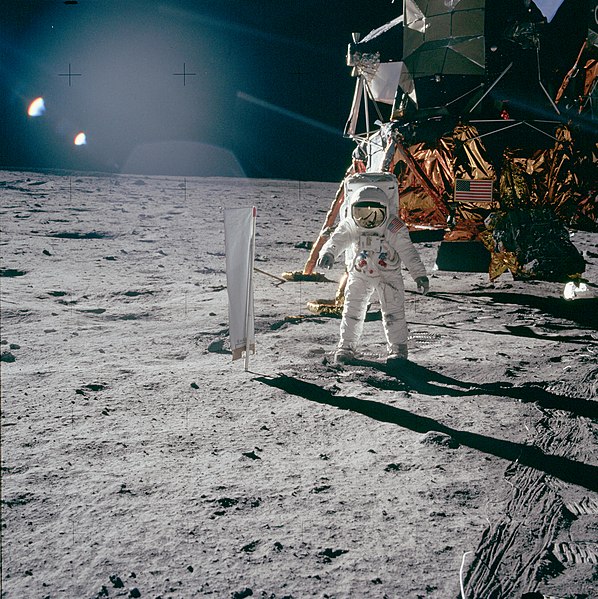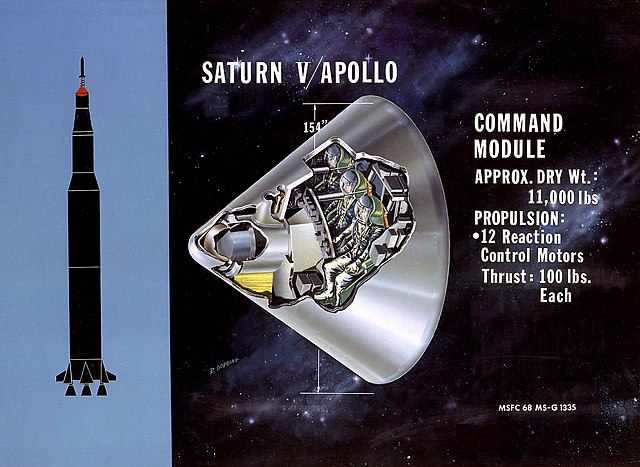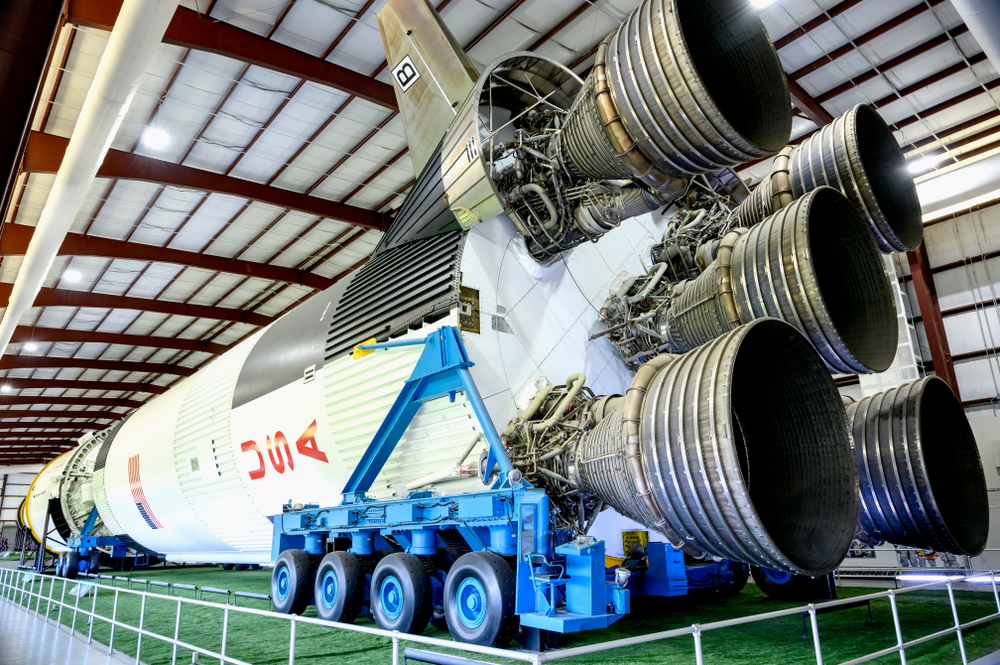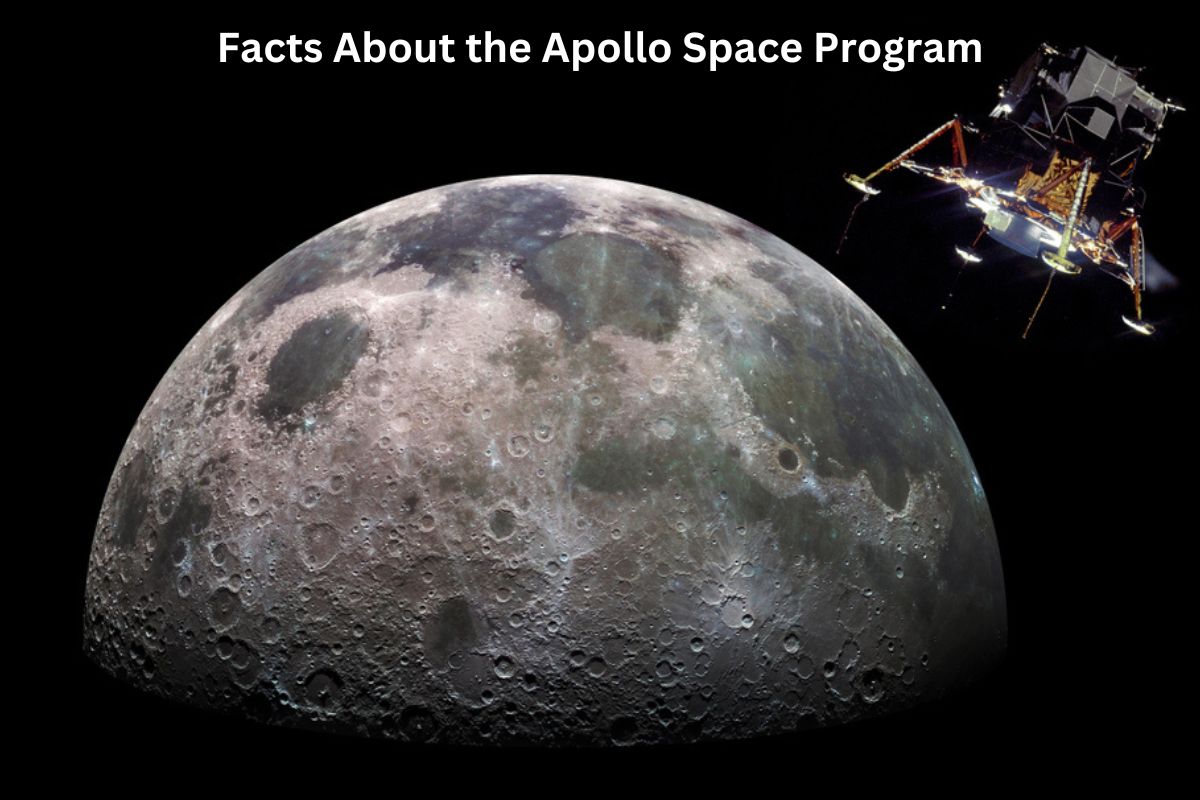The Apollo Space Program, a monumental undertaking by NASA in the 1960s and early 1970s, was a series of missions that achieved the historic goal of landing astronauts on the Moon and safely bringing them back to Earth.
This incredible endeavor left an indelible mark on human history and space exploration, with a legacy that continues to inspire scientific discovery and the pursuit of ambitious space exploration missions.
In this exploration, we will delve into some key facts about the Apollo Space Program, shedding light on its significance and enduring impact.
Apollo Space Program Facts
1. Apollo 11: First successful Moon landing in 1969
Apollo 11 was a historic space mission launched by NASA on July 16, 1969. The mission’s primary objective was to achieve the first successful human landing on the Moon.
The crew of Apollo 11 consisted of three astronauts: Neil Armstrong, Buzz Aldrin, and Michael Collins. On July 20, 1969, Neil Armstrong and Buzz Aldrin became the first humans to set foot on the lunar surface, while Michael Collins orbited the Moon in the command module.
Also Read: Apollo 11 Facts
Neil Armstrong’s famous words upon stepping onto the Moon were:
“That’s one small step for [a] man, one giant leap for mankind.”
The mission successfully returned to Earth on July 24, 1969, safely bringing the astronauts and lunar samples back home.

2. Six lunar landings from Apollo missions 11 to 17
The Apollo Space Program achieved a total of six successful lunar landings on the Moon’s surface.
These lunar landing missions included Apollo 11 (1969), Apollo 12 (1969), Apollo 14 (1971), Apollo 15 (1971), Apollo 16 (1972), and Apollo 17 (1972).
Each of these missions had specific scientific goals and objectives, which included collecting lunar rock and soil samples, conducting experiments, and studying the lunar geology.
3. Apollo 13’s famous near-disaster and safe return
Apollo 13 was the seventh manned mission in the Apollo program, launched on April 11, 1970, with a crew consisting of James Lovell, John Swigert, and Fred Haise.
Also Read: Facts About Sputnik
Approximately 56 hours into the mission, an oxygen tank in the service module exploded, leading to a critical situation. The planned lunar landing was aborted, and the mission’s focus shifted to safely returning the crew to Earth.
The crew faced numerous challenges, including limited power, water, and environmental control, but through teamwork and the support of mission control, they managed to navigate a safe return trajectory.
Apollo 13 safely splashed down in the Pacific Ocean on April 17, 1970, and the crew was recovered by the USS Iwo Jima.
The mission is often referred to as a “successful failure” because it demonstrated NASA’s ability to handle emergencies in space and safely return astronauts even when a lunar landing was not possible.

4. Apollo spacecraft: Command Module, Service Module, Lunar Module
The Apollo spacecraft consisted of three main components, each with specific functions:
- Command Module (CM): The CM was the crew’s living quarters during the journey to and from the Moon. It contained seats for the astronauts, navigation and control systems, and communication equipment. It also had a heat shield to protect the astronauts during re-entry into Earth’s atmosphere.
- Service Module (SM): The SM was attached to the back of the CM and housed the spacecraft’s propulsion system, power generation, and other vital systems. It provided power and maneuverability during the mission.
- Lunar Module (LM): The LM, often referred to as the “LEM” (Lunar Excursion Module), was used exclusively for lunar descent and ascent. It had landing gear, thrusters, and scientific equipment. The LM was designed to transport astronauts from lunar orbit to the lunar surface and back to orbit.
5. Twelve astronauts walked on the Moon
Over the course of the Apollo program, a total of twelve astronauts had the opportunity to walk on the Moon’s surface.
The first moonwalkers were Neil Armstrong and Buzz Aldrin during the Apollo 11 mission in 1969. They spent about 2.5 hours outside the Lunar Module, conducting experiments and collecting samples.
Subsequent missions also featured moonwalkers, including Alan Bean, Edgar Mitchell, David Scott, James Irwin, John Young, Charles Duke, Eugene Cernan, and Harrison Schmitt.
These astronauts conducted experiments, took photographs, and collected valuable lunar samples that provided insights into the Moon’s geological history.

6. Saturn V: The powerful rocket that launched Apollo missions
The Saturn V rocket was the launch vehicle used to send the Apollo spacecraft on their way to the Moon. It stood at a towering height of over 36 stories and remains one of the most powerful rockets ever built.
The Saturn V had three stages: the first stage, powered by five F-1 engines, provided the initial thrust; the second stage, powered by five J-2 engines, continued the journey into Earth orbit; and the third stage, with a single J-2 engine, propelled the spacecraft toward the Moon.
The Saturn V was capable of lifting heavy payloads into space, making it crucial for the success of the Apollo program. It had an impressive track record of reliability during its operational lifespan.
7. Lunar Rover: Used for exploration in last three missions
The lunar rover, also known as the Lunar Roving Vehicle (LRV), was a critical addition to the last three Apollo missions: Apollo 15, 16, and 17.
The rover was designed to allow astronauts to explore the lunar surface more extensively than before. It was electrically powered, using batteries charged by solar panels, and had a top speed of about 8 miles per hour (13 kilometers per hour).
Equipped with scientific instruments and cameras, the rover allowed astronauts to travel several miles from their landing site, collect more diverse geological samples, and conduct experiments at various locations.
The inclusion of the rover significantly expanded the scientific capabilities and range of exploration during these missions.
8. Valuable scientific discoveries from lunar samples
The Apollo missions brought back a wealth of scientific data and lunar samples that continue to be studied by scientists to this day.
These lunar samples provided insights into the Moon’s geological history, including its age and composition.
They also helped confirm the theory that the Moon was formed from the debris of a giant impact on Earth early in the solar system’s history.
The experiments conducted on the lunar surface and data collected from the missions contributed to our understanding of the Moon’s geology, magnetic field, and seismic activity.
9. Apollo’s legacy in human space exploration
The Apollo program left a profound legacy in the field of human space exploration and had a lasting impact on science, technology, and international cooperation.
It demonstrated the United States’ ability to achieve ambitious goals in space and played a significant role in the geopolitical rivalry of the Cold War era.
The Apollo program inspired generations of scientists, engineers, and astronauts and fostered a spirit of exploration.
It paved the way for subsequent space programs, including the Space Shuttle program and the International Space Station (ISS), which have furthered our understanding of space and its potential for scientific research.
10. Explored the Moon and paved the way for future missions
The Apollo program marked a milestone in the exploration of the Moon but also emphasized the human desire to explore beyond Earth.
The lessons learned from Apollo missions continue to inform current space exploration efforts, such as NASA’s Artemis program, which aims to return humans to the Moon and establish sustainable lunar exploration.
Additionally, the Apollo program has inspired ambitions for future missions to Mars and other celestial bodies, setting the stage for the next generation of space exploration endeavors.
